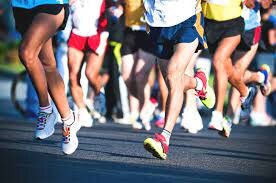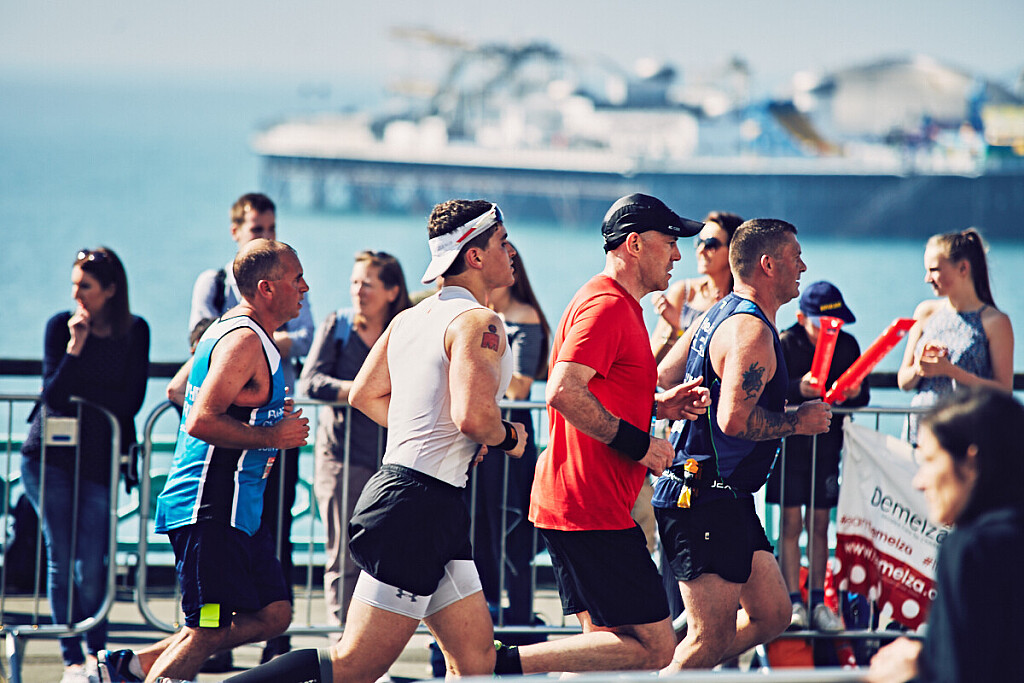Running News Daily
Running News Daily is edited by Bob Anderson. Send your news items to bob@mybestruns.com Advertising opportunities available. Train the Kenyan Way at KATA Kenya and Portugal owned and operated by Bob Anderson. Be sure to catch our movie A Long Run the movie KATA Running Camps and KATA Potato Farms - 31 now open in Kenya! https://kata.ke/
Index to Daily Posts · Sign Up For Updates · Run The World Feed
Three Phases of Post-Marathon Recovery
Congratulations! You just completed a marathon and whether or not you met your goal time, you have earned the right to take some serious time off. In fact, your ability to recover well will determine the real outcome of the marathon - your fitness. This article will outline why we need to recover and give you input on how to handle each of the three critical recovery phases: First Hour, 12 Hours and 72 Hours.
Your Biggest Workout

If you can take the emotions, cheering fans and adrenaline rush of crossing the finish out of your mind for a second, your marathon experience boils down to one thing: your longest--and potentially hardest--run all year and perhaps in your life.
Just as you took care of your body after those critical 16, 18 and 20+ mile long runs on your way to race day, so too must you care for your body now. Given the demands of the race, and how much of it you truly "raced," you have placed a massive dose of training on your body. If you can recover properly, you can not only avoid burnout or injury, you could set the stage for an even better training cycle in the future.

The Weight Room
Since most of us have lifted weights at some point in time, I think it's helpful to draw a parallel between your marathon and the weight room. We've all gone to the gym after some time off, piled the weights on the bar and had a good session...only to wake up the next morning practically paralyzed.
Your muscles do significant work, and they need to recover. It's the recovery, not the lifting, that makes you stronger. After all if you go back on the bench that next day, you'd probably drop the bar on your neck! Savvy weightlifters alternate body parts, making sure that they are well-recovered before attempting another session.
This powerful experience is not that different from what your body undergoes during a marathon. There is deep muscular fatigue from the effort, not to mention the cost of actually covering 26.2 miles on your feet and legs. If you can understand this physical state to be an opportunity, instead of an inconvenience, you might well be able to absorb the work done and earn some significant fitness.
Phase One: The First Hour
Once you've crossed the finish line and have your medal in hand, it's imperative that you turn your focus towards recovery. You can start doing the mile splits and swapping stories as soon as you have taken a few basic steps.
1. Dry Clothes -- Once you stop working, your body will almost immediately begin to enter recovery mode. Even on a warm day you'll find yourself getting quite cold and clammy; avoid these post race chills by quickly changing into some nice warm soft clothes. This includes footwear, and injuries aside, another pair of shoes is best (as opposed to sandals) so as to keep your feet from swelling up and to provide you with much-needed support.
2. Feet Up -- After your quick change, you'll want to find a way to lay down and get your feet up. After several hours of hard work, your body needs help facilitating blood flow. Besides, this is just plain relaxing. Make sure you are well enough to be alone or have a spotter keep an eye on you, and just lay down. Ideally you'll be able to keep your feet up for 15- to 25 minutes at this first go, and it's recommended you do this several more times during the day.
3. Quick Calories -- You'll need some kind of recovery meal, ideally in liquid form and containing some protein. Avoid processed fruit juices or other sugary substitutes; use what has worked in training but make sure this happens in the first 30 minutes after your event.
4. Care for Damage -- If you have sustained some kind of injury such as a blister or muscle strain, now you can begin assessing the true extent of what you have done and seek out help. Your brain will be much clearer, and if you need to go somewhere or wait in line at least your basic needs will have been met.
Phase Two: 12 Hours
You aren't out of the woods just yet. By now you have found your friends and family; perhaps you have even made it back to your hotel/house and are now thinking about your next meal. Don't just mail it in from here; there are still a few key things you can do aside from eating the biggest meal you can find (although that's not a bad place to start!):
1. Get Cleaned Up -- There's nothing like taking a shower or bath that will rejuvenate you - and make you aware of any issues you might have (like chafing, ouch). If possible, consider a cool or even cold bath to help promote recovery. Note that this is not for the faint of heart.
2. Serious Nutrition -- Now that your stomach has settled, you'll want to focus on a proper meal. You'll most likely have a pretty solid craving, so picking a place to eat won't be hard. Just bring a snack in case you aren't the only finisher with this idea. As you pick your foods, try to keep them reasonably healthy and drink lots of water.
3. Sensible Celebration -- You have earned the right to party, but don't overdo it. Your body is still running on fumes, and adding alcohol and lots of time standing on your feet can be fun but does have its limits. Make sure you get IOUs from everyone for next time and head home.
4. Sleep Right -- Chances are you'll be so tired that falling asleep won't be an issue; the problem is you'll be so sore that staying asleep could be harder than you think! Put plenty of fluids and maybe even a snack on your bedside table and keep your feet elevated. Feel free to roll over as many times as you can the next day.
Phase Three: 72 Hours
By the end of 72 hours you'll be through the toughest part of your recovery process. But you need to get there first. This period is marked by some of the deepest need for recovery, for once the adrenaline wears off the fatigue and soreness will be all that's left.
1. Stay Active -- Do your best to avoid being stationary other than sleeping. Light walking, an easy dip in the pool or a short spin on an exercise bike will each, in their own way, help your muscles flush out the toxins and after-effects of the race. Frequent rest will be needed, but total rest is your enemy here.
2. Continue Quality Foods -- You are what you eat, especially when your body is in such a vulnerable state. A treat or two is OK, but try to save the real craziness for a later date when you can truly savor the food (and bear the consequences).
3. Self-Massage -- Lightly working on your calves, feet, hamstrings, glutes and quads is another great way to stay loose and promote recovery. Whether you use your hands or a fancy gadget, taking periodic breaks to focus on your trouble areas will really help.
Moving On
Once you have emerged from the most intensive recovery, your work is still not done. Your body is still a long way from being at 100 percent. General guidelines include staying active by walking or including some cross-training like cycling or swimming. The earliest you should consider running is about a week out, but if you can stay away from the sneakers for a full 14 days you'll really be ready to begin the process of getting your stride back.
by Patrick McCrann
Login to leave a comment




